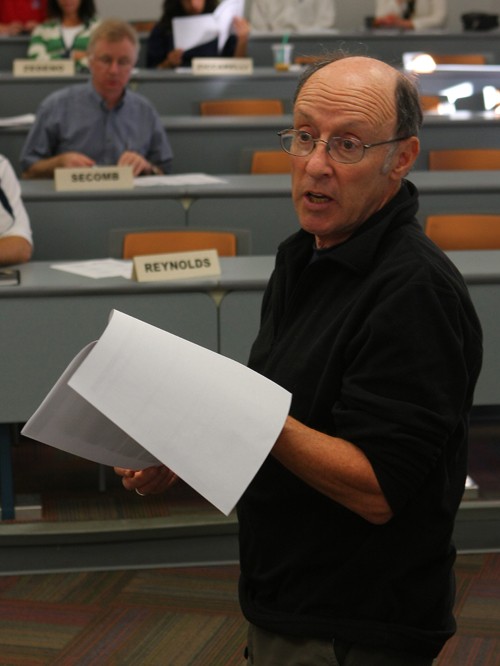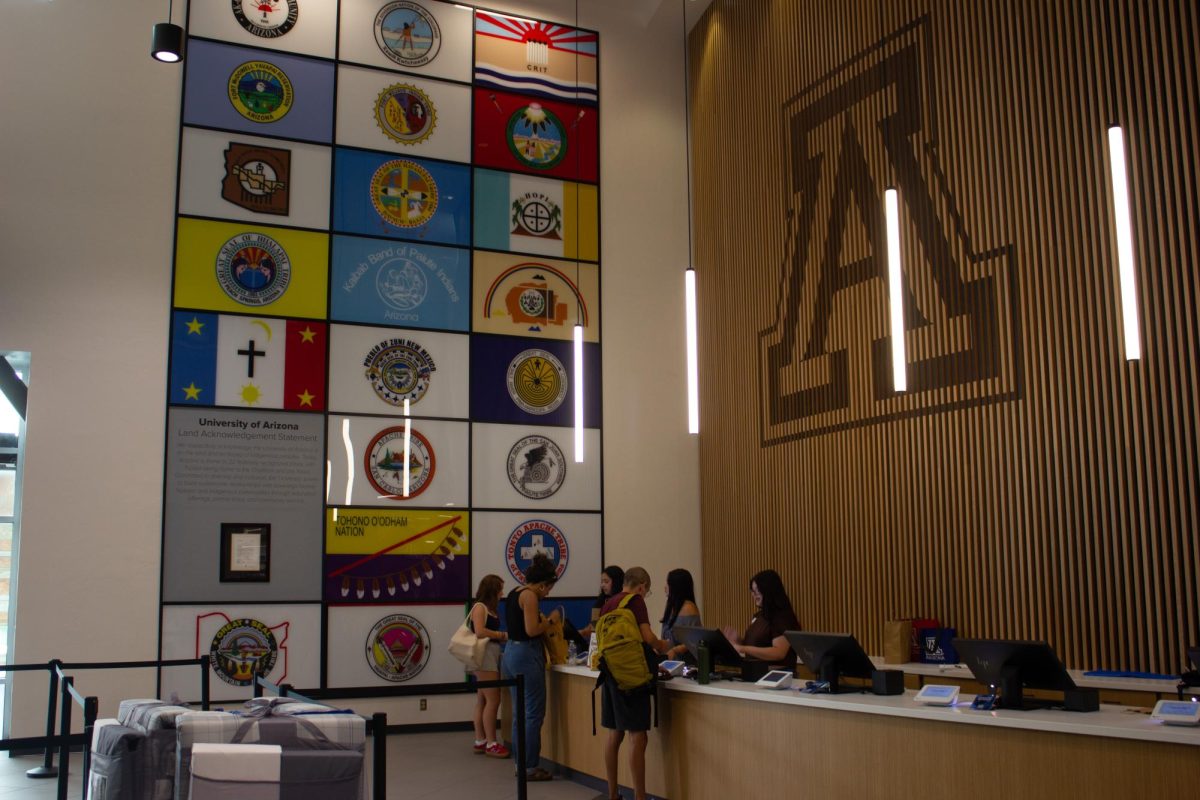Money was on the minds of members of the Faculty Senate at its meeting last night, with informational briefings from a number of administrators on issues related to the UA’s budget.
The budget is “”the not-quite-four-letter word that’s on all our minds these days,”” President Robert Shelton said.
In her opening address to the Senate, Provost Meredith Hay introduced a large-scale reformation of the UA’s budget management process known as the “”Budget Redesign,”” which Hay called “”probably the most complicated, in-depth redesign of the university’s budget ever.””
The plan, which Hay said will take many months to put in place, would involve funneling available dollars more directly to the colleges, especially the tuition money those colleges are responsible for bringing in.
The redesign is only in its infancy, said Associate Professor of History and former Secretary of the Faculty J.C. Mutchler.
“”Nothing has been firmly decided,”” Mutchler said.
Vice Dean of the Eller College of Management Leslie Eldenberg fleshed the plan out in a little more detail, although she did not have time in the meeting to present an extensive slide presentation that was included in an informational packet given out to senators.
Eldenberg, who is heading a committee to develop the new budget model, said she conducted exhaustive research on the UA’s peer universities to develop the new system.
The meeting also featured updates from the presidents of the Associated Students of the University of Arizona and the Graduate and Professional Student Council.
GPSC President David Talenfeld presented the Senate with the most recent version of the graduate student bill of rights and responsibilities and asked that the bill be included on the Senate’s agenda for endorsement at its December meeting.
ASUA President Chris Nagata asked for and received the Senate’s endorsement of a “”Textbook Letter of Commitment,”” an informal pledge to be signed by willing faculty members stipulating that they will agree to use textbooks for two consecutive years whenever possible to keep costs down for students.
Also presented at the meeting was a “”Strategic Plan Scorecard,”” developed by Strategic Planning and Budget Advisory Committee Chair Lynn Nadel. The scorecard, the first of its kind and compiled at the behest of Hay, is meant as a qualitative assessment of the university’s progress on its Strategic Plan, a broad layout of long-term goals.
“”This is a first attempt at using the strategic plan the way it should be used,”” Nadel said.
The scorecard includes detailed statistics on figures such as enrollment and retention rates, degree costs and endowment amounts, and compares these figures to averages from peer institutions.
What the numbers reveal, Nadel said, is that “”we’re doing good at everything it doesn’t take a lot of money to do good at.””
Nadel said he plans to take the scorecard to the Arizona Board of Regents as a show of the state of the university.
“”Part of the exercise here is for this to be a little bit of a reality check,”” he said.









